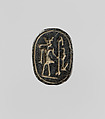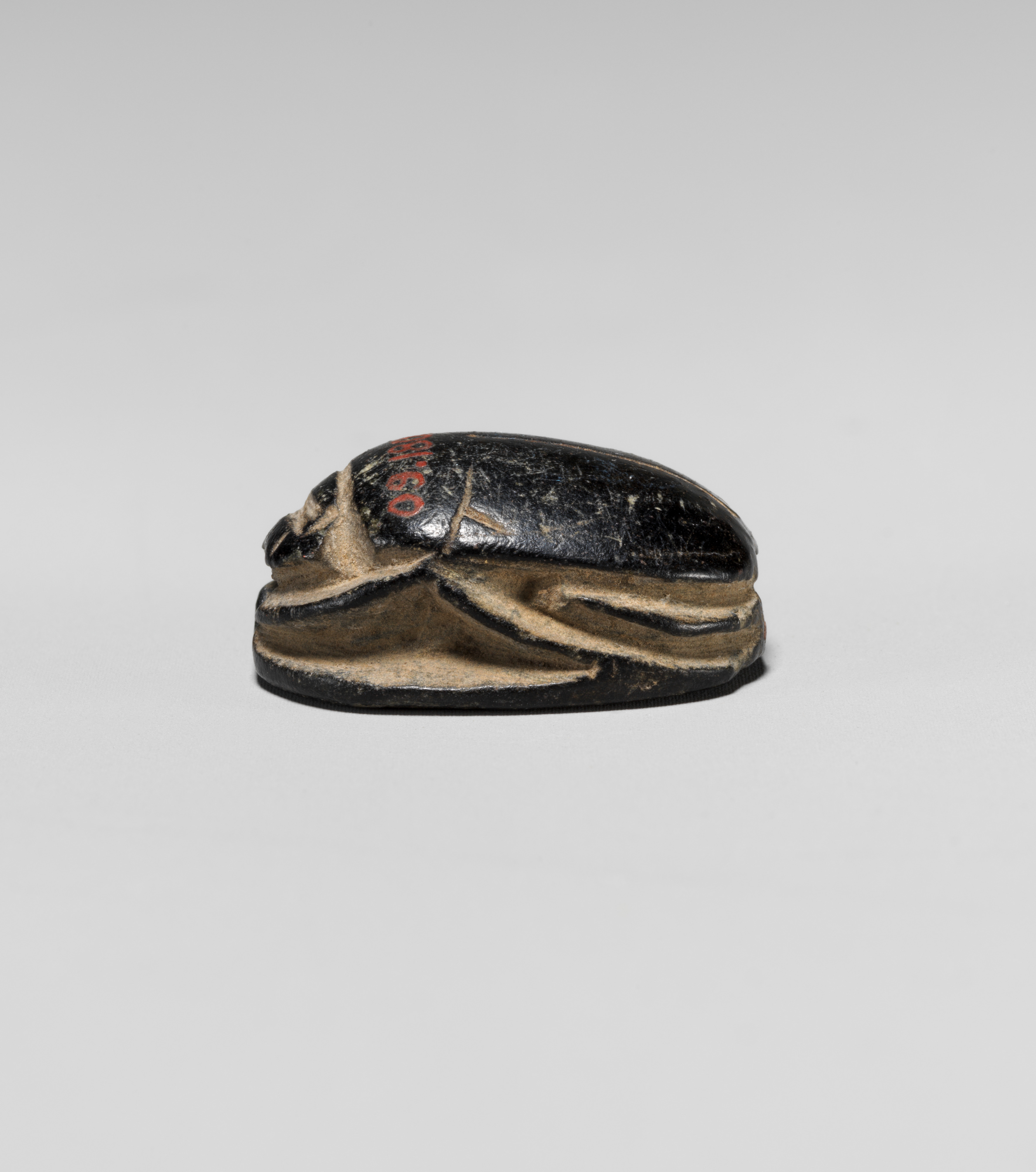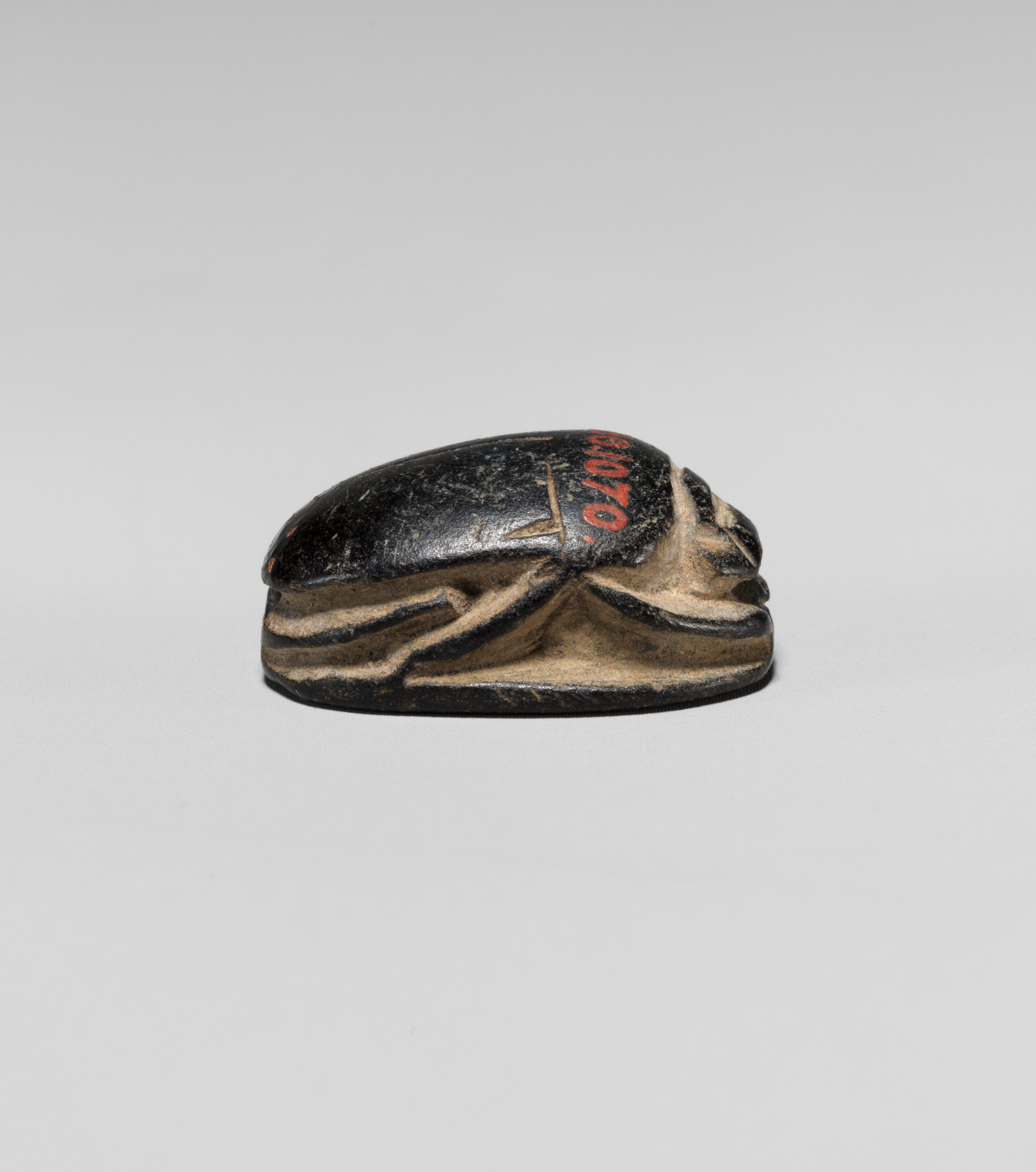Scarab with Representation of Baal
New Kingdom
The underside of the scarab shows a standing male figure facing right, wearing a high conical headdress with a long streamer at the back and horns protruding from the front. He holds the Egyptian was-scepter, a symbol of power held by deities or royal figures. In front of him sits a figure of Maat, the Egyptian goddess of truth and justice, identified by the ostrich feather on her head. Even though similar in shape, the man’s headdress should not be mistaken for an Egyptian White or Double Crown worn by the pharaoh; it is the headdress of the Levantine storm god Baal. Depictions of Baal appear in Egypt around the end of the Middle Kingdom, but his image is more prevalent in Egyptian art of the New Kingdom and reaching a peak in the Ramesside period, when several Levantine gods became important in Egypt. This is partially attributed to the fact that certain of these deities (such as Baal and Resheph) have martial traits, which appealed to the New Kingdom pharaohs’ military aspirations. The presence of the figure of Maat and the style in which the incisions are made indicate that this example dates to the Ramesside period (Dynasty 19–20, ca. 1295–1070 B.C.).
Due to rights restrictions, this image cannot be enlarged, viewed at full screen, or downloaded.
This artwork is meant to be viewed from right to left. Scroll left to view more.





